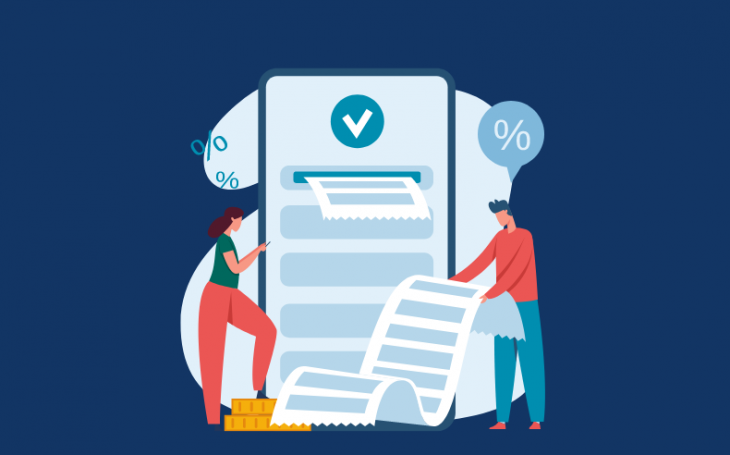You may also like: Impact of Budget 2021 on Banks & NBFCs
Covid-19 Impact on the Banking Sector
2022: This year is considered the best year for the banking industry, according to the analysis done at the end of the FY 2022, in terms of profitability, resilience, capitalization and assets. On most parameters, the banking sector is doing pretty well.
2020: RBI instituted the first of its kind inspection in the banking sector called Asset Quality Review, which resulted in the massive clean-up of various banks. This is a huge clean-up drive in 2 phases:
The first phase just got over before 2020, and just when the second phase initiated, Covid-19 hit us in full force, and strict lockdowns were imposed on us.
The banking regulators and the government worked together to make changes to overcome this sudden situation in ways such as
- The policy rate was brought down, in fact, the lowest in history
- RBI brought down its repo rate to 4% to give a boost to the growth of the Indian economy
- The government introduced a critical step called the Credit Guarantee Scheme. The most affected under this scheme was the MSME segment because most needed capital to run their businesses. The CGS was started to reinforce the credit delivery system and ease the credit flow to the MSE sector for them to access finance to grow their enterprises.
- The money spent by the government to tackle the pandemic related issues through various concessions or dispensations as a percentage of the GDP of the country is far lower than other developed countries. In other words, the fiscal cost is lower than other developed countries.
Hence, as far as it is concerned, the banking industry is able to withstand the Covid-19 wave in pretty good shape despite various challenges it came across on the way.
Reforming Banking Sector Post-Pandemic
RBI has made a series of reforms for the banking industry. Among them
- Scale Based Regulation (SBR) harmoniously regulates the arbitrage opportunities between banks and NBFCs, especially in terms of NPA classification norms and liquidity coverage ratios for NBFCs to stay liquid.
- Co-lending model between banks & NBFCs
- The inclusion of technological advancements changes the entire banking ecosystem.
- Data sharing is easily accessible with the public’s consent for various financial purposes.
- New products like Buy-Now-Pay-Later to ease the payment system and micro-micro loans for small needs.
- The dividing line between banks & NBFCs is abolished.
- On the digitisation front, India is the most happening country currently.
You May Also Like: What is Co-Lending and How will NBFCs Benefit From It?
The Restructuring of Banking Industry – A Boon Or A Bane?
- It is a boon for the MSME segment, mainly through government schemes like the credit guarantee scheme, which allows the banks a certain percentage of turnover to get fresh loans.
- Corporate Restructuring in the banking sector was drastically reformed, which posed a great advantage, and now, it is in better health than before.
The only worry that persists is that the average loan given to a person by some banks in MSME has gone up tremendously, and they are finding unethical ways to make their balance sheets appear healthy. This is backdoor restructuring which can cause a negative impact.
Are Fintechs disrupting the Indian Banking System?
The scenario is difficult to analyse as new fintechs are coming up with their own niches and spaces every week and we can’t say how many services they offer. What actually happens is
- The alliance between banks & NBFCs; NBFCs & fintechs; banks, NBFCs and fintechs according to needs and purposes.
- Fintechs play a critical role in every stage of data accessing and processing. They make it possible and easier for every financial segment.
Overall, it is a complex ecosystem to subjugate and analyse; we just need to watch it closely.
Impact on the Types of Banking Sector
The current scenario of public sector banks has changed. The reasons are:
- Consolidated model – creating subsidiaries of banks or merging two banks. Some banks are left alone for political reasons.
- Some banks, such as SBI and Bank of Baroda, have used the opportunity in terms of technological adaptation. The situation is better than it used to be, and they are on par with the private banks.
Private Sector banks
People are shifting quickly to private sector banks due to various supported technologies. Incrementally, a large portion of assets and deposits of the banking industry is moving to this sector too.
Why is this happening?
- They are nimble-footed.
- They are technology savvy.
- They are faster in many financial elements such as loan appraisals, loan processing, customer service, and more.
All-in-all, public sector banks are losing out to private sector banks.
You May Also Like: How the Pandemic changed the Banking Industry
Banks & NPAs
According to the latest Financial Stability Report 2021, scenes with NPAs are average to bad. The RBI stated, “Gross non-performing asset (GNPA) ratio of SCBs may increase from 6.9 per cent in September 2021 to 8.1 per cent by September 2022.” And, in the worst case, NPA could increase to 9.5%. But, stability and resilience still prevail in financial institutions. On the one hand, banks have improved their credit appraisal, credit underwriting and monitoring systems. On the other hand, since they are making a profit, they also make provisions for bad assets. The provision coverage ratio of some banks is very high. It is suggested that close monitoring is needed to control the stress of the NPAs of banks. Overall, at this point, bankers are wiser and handling NPA in a much better & smarter way; they are more into creating quality credit for people.
Neobanks Prevailing in the Banking Industry
Even though they are given the name “banks”, they are not generally RBI-licensed banks. They are raising deposits on behalf of certain banks. The situation of neobanks is still evolving, but for India to go to branchless banking, it will take a lot of time. All-in-all, they are digital banks which are still getting newly implemented into the Indian banking system.
Political Scenarios in the Banking Industry
The political issues depend from region to region in which the top-level executives are either able to or not able to withstand the pressure from the politicians. Nationalization in India has made sure that the banking sector is able to use it for the greater good & growth of the economy.
The government uses banks as tools for socio-political measures for the betterment and upliftment of people as well as profitability measures for the success of business organizations via privatization. Both the scenarios go parallel to each other. In other words, you can’t have the best of both worlds. You have a mixture of both good and bad.
You May Also Like: How Branchless Banking is Facilitating Financial Inclusion
Frauds in the Banking Sector
Due to the AQR review, frauds and scams in banks came to light. For instance, the CEO of Allahabad Bank was sacked in relation to the Nirav Modi scam case. Similarly, the Vijay Mallya fraud case helped get many prominent bankers arrested from their posts.
Every profession has its share of bad apples. Since the banking industry deals with public money, it is always in the public eye for any mishap. Hence, banks are regulated heavily and scrutinised by government bodies for fraud to not happen at all.
Internal factors that are responsible for fraud are
- Credit appraisal and credit underwriting systems are not up to the mark.
- Obsession with balance sheets growth in public sector banks
External factors that are responsible for fraud are
- Pressure from the government to lend, lend and lend to various sectors, which in turn is responsible for bringing down the economic growth rate.
- Policy parameters – Things were not moving much in the banking sector before 2014, and there were many court cases.
A solution to all this? There is only one word, “Technology”, especially data accessibility execution for various financial parameters.
Perspective on Loan Waivers
It is not the right thing to do. But unfortunately, it is happening not only by the central government but also by the state governments. Loan waivers are also responsible for destroying the current credit culture of the banking sector. Thus, there is a direct and indirect impact on the financial industry.
Conclusion
We lived to tell an unexpected tale through the Covid-19 pandemic which changed our lives drastically. Every sector was affected by it, including the banking industry. India’s economic growth impacted badly and it has seen its worst GDP figures. But, even with bad scenarios in 2020, the banking regulators and the government worked together tremendously well enough to strengthen the country’s economy in just two years. The most drastic change we saw was that the banking sector had shifted into digital, easing customers’ experiences with amazing technological advances. Hence, we can applaud India for doing an awesome job in overcoming a sudden issue within a short span of time.
We hope that you enjoyed reading this narrative. Watch our webinar video with Tamal Bandyopadhyay, to learn more about how the pandemic has changed the banking industry.
We conduct monthly webinars, and we hope you will participate in them for more knowledgeable ventures. Please feel free to share any suggestions with us. And don’t forget to stay tuned for upcoming blogs!
Disclaimer: The views and opinions expressed herein are those of the speaker of the webinar and do not reflect the views of Habile Technologies. Any content provided is of the speaker’s opinion and is not intended to malign any organization, company, individual or anyone or anything.
You May Also Like: 5 Key Principles of Digital Lending for Banks and NBFCs





